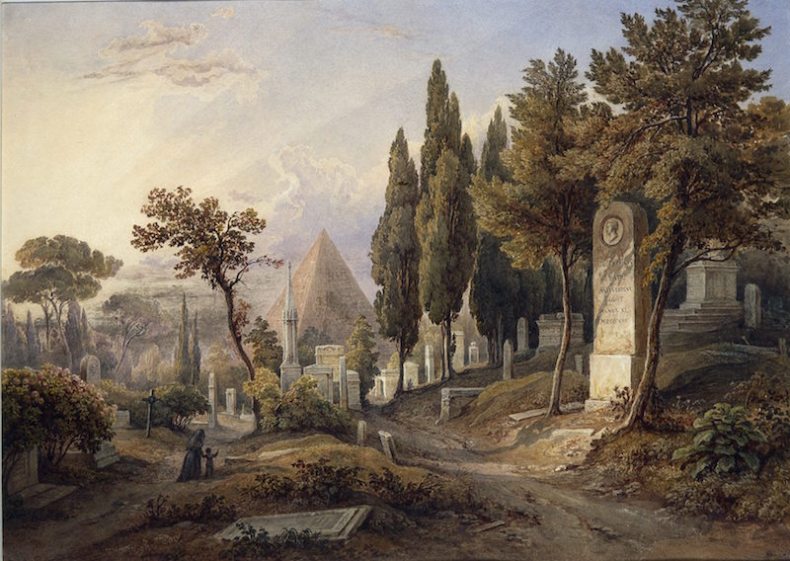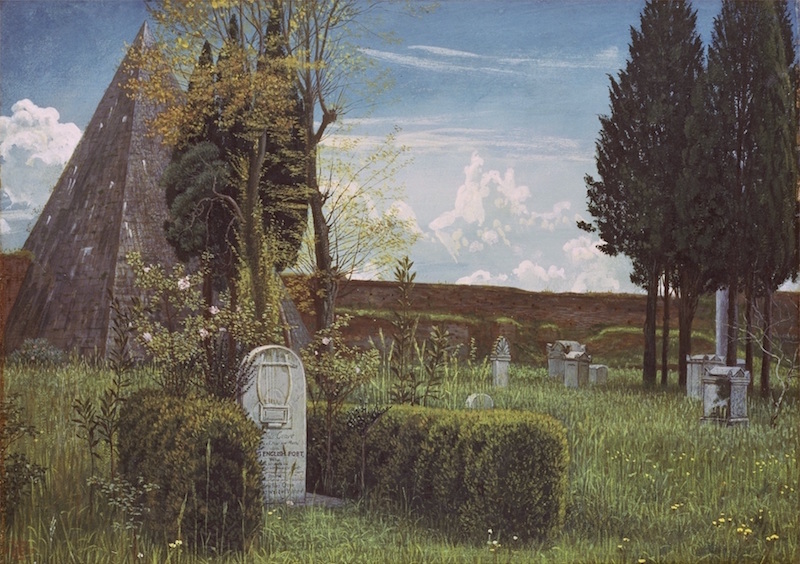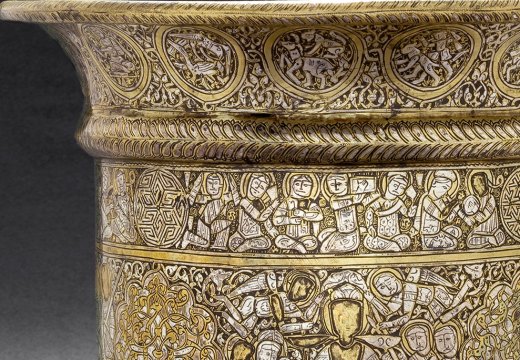I suppose it was the sheer beauty of the place, a green oasis of peace in the heart of Rome, that first appealed to me. Only gradually did its history, as a microcosm of the foreign community in Italy, also fascinate me. The place is the Protestant cemetery, still in use and nowadays called more accurately, if awkwardly, the Non-Catholic Cemetery.
In my reaction to it, I was in good company: Percy Bysshe Shelley had called it ‘the most beautiful cemetery’ he knew, not long before his own grave joined that of John Keats there. Many share his opinion. Authors as diverse as Henry James, Gabriele D’Annunzio, and Axel Munthe captured in prose, and others in poetry, the sad but joyful atmosphere of ‘the cemetery of artists and poets’. Among the painters’ graves are those of Karl Briullov, Enrico Coleman, Salomon and Hermann Corrodi, Hans von Marées, Jacob More, Elihu Vedder and Penry Williams. The funerary monuments include designs by John Gibson, Joseph Gott, Giambattista Piranesi, and Benjamin Spence. A design by Bertel Thorvaldsen came to light only recently.

The Protestant Cemetery in Rome with the tomb of Julius August Walther von Goethe (1789–1830) (c. 1840s), Rudolph Müller. Klassik Stiftung Weimar
How artists have viewed this unusual site is the subject of an exhibition this autumn at the Casa di Goethe, the building in central Rome where the poet had lived (‘At the foot of the Pyramid: 300 years of the cemetery for foreigners in Rome’; 23 September–13 November). Goethe himself was much moved by the burial-ground. He sketched on the spot and alluded to the possibility of being buried there himself. Ironically, it was instead his son August who died prematurely in Rome in 1830, his grave painted a few years later by the Swiss artist Rudolph Müller.
The first recorded burial dates from 1716, the basis for now celebrating a tercentenary. New work by historians, notably Edward Corp, has confirmed that the burial ground’s origins were linked to the arrival in Rome of the Stuart court in exile, several of whose members were of Protestant faith. On their deaths, the Papal authorities allowed them to be buried at the foot of the Pyramid, itself significantly the tomb of a Roman high official, Caius Cestius, dating to around 18 BC. Not surprisingly, this massive monument – now looking cleaner than it has for 40 years thanks to a recent restoration – makes an appearance in many of our selected exhibits.
But it would be wrong to assume that these works were all painted as vedute by artists, whether Roman or foreign, for sale to visitors. As I continued researching their provenances, I realised how many of them revealed a connection between a family in a distant land and a death in Rome. In the mid 19th century, for example, Thorald Læssøe painted the grave of a young artist, Nils Johan Olsson Blommér, for his widow to take home to Sweden; and also a striking landscape view for the parents of a fellow Dane, Johannes Knudsen, who succumbed to tuberculosis in 1856. It belongs still to Knudsen’s descendants. In his only lengthy visit to Rome, in 1927, Edvard Munch made several sketches but his sole painting was of the grave of his uncle, the Norwegian historian, P.A. Munch. Because of their family associations, these works have a more personal feel than, for instance, those honouring the graves of Keats and Shelley produced by William Bell Scott and Walter Crane.

The Grave of Keats (1873), Walter Crane. Ashmolean Museum, Oxford
How to inject a more dynamic note into the exhibition? Whatever their motivations – a veduta for sale, a commission, or a tribute to a Romantic poet – the drawings and paintings show what was intended to be static and perennial. In complete contrast are the views, mostly dating to around 1800, of night funerals taking place in front of the pyramid: carriages with valets, clouds of smoke from flaming torches, mourners dressed in black (Roman and foreign, women and children too), while the coffin is gently lowered into a waiting grave. Of the five known such scenes, three will be shown together this autumn for the first time. I wrote ‘five’, which was still correct until an advanced stage of completing the catalogue. Then, quite unexpectedly, a ‘walk-in’ showed us a print from his collection, which we recognised to be the sixth and, astonishingly, much the earliest scene of a night funeral, published in London in 1767. There is still much to learn about this unusual haven in the Eternal City.
From the July/August issue of Apollo: preview and subscribe here.
Unlimited access from just $16 every 3 months
Subscribe to get unlimited and exclusive access to the top art stories, interviews and exhibition reviews.














![Masterpiece [Re]discovery 2022. Photo: Ben Fisher Photography, courtesy of Masterpiece London](http://www.apollo-magazine.com/wp-content/uploads/2022/07/MPL2022_4263.jpg)
Has the Fitzwilliam lost the hang of things?